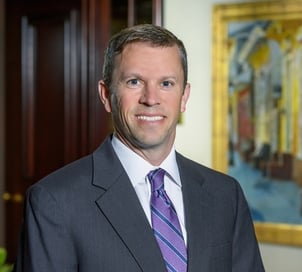The Families First Coronavirus Response Act: What Businesses Need to Know
On March 18, 2020, Congress passed the FAMILIES FIRST CORONAVIRUS RESPONSE ACT (“FFCRA”) addressing the COVID-19 outbreak, and the president has signed the bill into law. The impact on businesses and employees covered by this law are significant. What follows is a summary of what we consider the most important employment-related provisions on mandatory paid sick leave and expanded FMLA coverage, including for the first time under federal law, mandatory paid leave. The bill also provides for employer tax credits to aid businesses in covering the costs of these payments, and we ask that you contact Jay Lobrano or your tax advisor for advice on utilizing these tax credits.
Emergency Paid Sick Leave:
The FFCRA requires private employers with 500 or fewer employees and public employers with more than one employee to provide paid sick leave if the employee cannot work due to one of the following triggering events:
- Adherence to a federal, state, or local quarantine order related to COVID-19;
- Advised by a health care provider to self-quarantine due to COVID-19;
- Has symptoms of COVID-19 and is seeking a medical diagnosis;
- Caring for an individual subject to a quarantine or advised to self-quarantine;
- Caring for a son or daughter if the school or normal place of care has been closed due to COVID-19, or if the normal caretaker is unavailable due to COVID-19; or
- Experiencing any other conditions specified by the Secretary of Health and Human Services (unless the employee is a health care provider or emergency responder).
All current employees are eligible for Emergency Paid Sick Leave.
How Much Has to be Paid?
For matters directly related to the employee (#’s 1-3 above), employers are required to provide emergency paid sick time of 80 hours for full-time employees and, for part-time employees, the average number of hours worked over a two-week period. The leave is to be paid at the employee’s regular rate of pay, with a cap of $511 per day and $5,110 in total.
Employees who take leave to care for others (#’s 4-6 above) will then be required to provide paid leave of at least two-thirds the employee’s regular rate for each day of leave taken. This obligation is capped at $200 per day and $2,000 total. The employee cannot be required to use other paid sick leave, or PTO prior to using the emergency sick time.
Employers with 50 or fewer employees can apply to the US Department of Labor for an exemption if complying would jeopardize the viability of the business.
The law takes effect “not later than 15 days from after the date of enactment,” which was March 18, 2020 when the president signed it into law, i.e., by no later than April 2, 2020. We hope the Department of Labor will clarify the precise effective date.
The Department of Labor is expected to issue additional guidance on calculating applicable rates of pay. The sick leave requirements expire on December 31, 2020.
Emergency Family and Medical Leave Expansion
This portion of the new law amends the FMLA and requires covered employers to provide eligible employees with Emergency FMLA leave.
All private employers with fewer than 500 employees are covered, but as with the Emergency Paid Sick Leave, employers with fewer than 50 employees can request an exemption from the Department of Labor if complying would jeopardize the viability of the business. Public employers are covered as they were under the “old” FMLA.
Unlike Emergency Paid Sick Leave, the amended FMLA covers only employees who have been employed for at least 30 days, and employees who are health care providers or emergency responders can be excluded at the option of the employer.
The amended FMLA leave is triggered when the employee is unable to work (or telework) because of the need to care for a son or daughter (under age 18 and as previously defined in the FMLA) because the school or place of care has been closed. This also applies if the childcare provider is unavailable due to the virus.
This portion of the law allows employees to take up to 12 weeks of leave, with the first 10 days unpaid. The remainder of the leave is at two-thirds the regular rate of pay, with caps of $200 per day and $10,000 total. It is the employee’s option to apply any available vacation or PTO to cover the unpaid period of leave.
As with the Emergency Paid Sick Leave, the Emergency FMLA amendment goes into effect “not later than 15 days after the date of enactment,” i.e., by April 2, 2020.
Employees should be restored to their prior or equivalent job position upon return from leave (as under the “old” FMLA). There are limited exceptions for employers with fewer than 25 employees but even the exceptions require reasonable efforts to restore the employee to an equivalent position.
Final Thoughts
This is intended as a summary of the key provisions of the FFCRA; specific questions will need to be addressed individually. We are concerned with the law’s impact on employers and I lament that Congress did not attempt to address the current crisis with financial support provided through existing state unemployment insurance systems, but an amendment to this effect proposed by Senator Johnson of Wisconsin was defeated 50-48.
We hope you are well and welcome any questions you may have.
RUSSELL L. FOSTER
Carver Darden Koretzky Tessier Finn Blossman & Areaux LLC
T: (504) 585.3837 F: (504) 585.3801
foster@carverdarden.com | carverdarden.com


